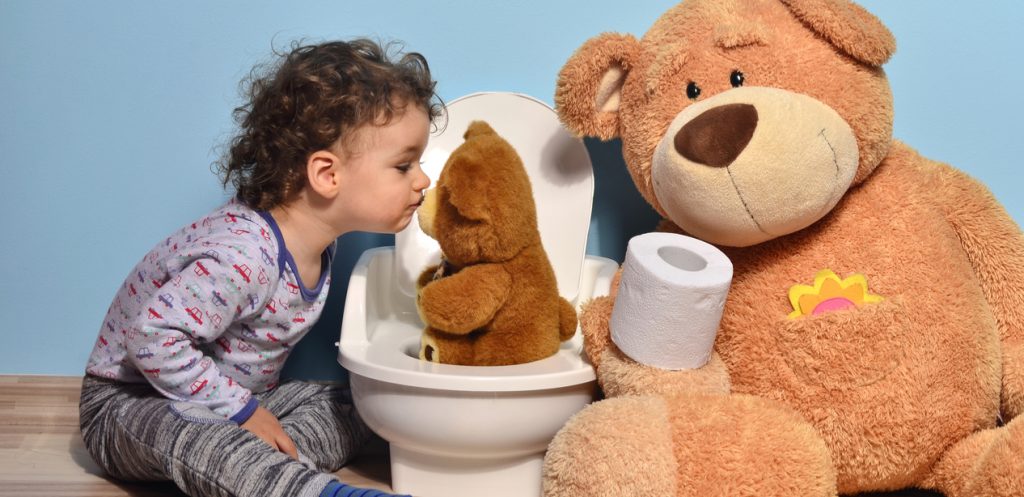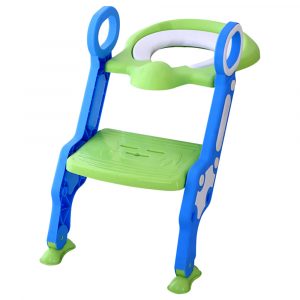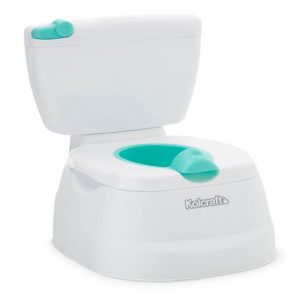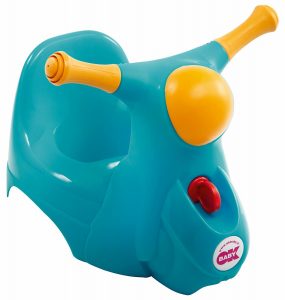Potty training toddlers is a messy business without a doubt. But eventually be sure that your child will get the hang of doing a wee or a poo in the toilet. You’ll need to be patient, encouraging and keep plenty of cleaning products on stand by.
First step in potty training toddlers: Make sure they’re ready
Your mum probably claims you were toilet trained at nine months. But she also claims you were talking at five months and eating a full roast dinner at the tender age of six weeks. So, don’t fret unduly about your own incontinent tot. Here are the main signs that tell you potty training toddlers must start:
1| They’re old enough to have bladder control
Toilet training is much easier when children are aged two and upwards. Proper toilet training is virtually impossible for a child under 18 months because the sphincters (muscle outlets) of the bladder and bowel aren’t yet under their control.
Bear in mind there’s a wide variation in how quickly toddlers potty train. Some of which is probably genetic. Lateness in acquiring bladder and bowel control runs in families and boys may take longer to get the hang of it than girls.
2| They know they’re doing a poo or a wee
At around 18 months toddlers often know they’re opening their bowels: they stop playing and wear a look of concentration on their faces. They might also tell you they’ve done a wee or poo and tug at their nappy or lie down in the ‘change me now’ position.
Another sign is if your child wees while her nappy is off and gazes with interest at the puddle and maybe clutches herself.
All these signals mean your toddler is starting to link effect with cause.
3| They’re showing an interest in the potty or toilet
Your child has probably been following you to the toilet for some time. If he starts indicating that he’d like to try using the potty or toilet himself, encourage this role play even if it doesn’t produce anything. If it does, you will probably faint with shock, but this is just the start.
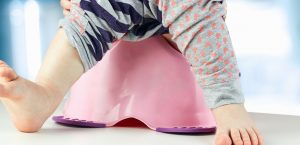
Preparing for potty training
If you think your toddler might be ready to give potty training a go, there are a couple of things to consider:
Is your child in good health?
There’s no point starting potty training while your child is miserable with teething, or the day after you fed them that cut-price sushi from the supermarket. Start potty training when they’re chirpy and in good health.
What time of year is it?
Summer is the best season for potty training. Your toddler can potter around the garden, or the parts of your home you don’t mind getting dirty, without a nappy on. She can then see what she’s producing, as can your visitors, while your extra laundry and soggy rugs will dry more quickly in the sun. And you can open windows, should the need arise.
“ I let my second daughter go naked from the waist down for a week. By day two, she was going to the potty herself and now she tells me when she needs to go. My first daughter was not as quick, so don’t worry if it takes longer. “
How long does potty training take?
Bowel control often comes before bladder control and children may be wet in the night for some time after they’re dry during the day. You can’t teach toilet training in a day – it may take weeks or months, with minor relapses if your child becomes troubled or ill. If you’re lucky, your toddler may step out of nappies within a couple of weeks and never look back.
Introducing a potty
Toilets can seem enormous to toddlers, who often worry they’ll fall in and get flushed away. Try not to encourage this anxiety. Reassure your toddler that’s there no chance of this happening.
What sort of potty you buy doesn’t really matter but quantity is a good idea. If you want to splash out, you can put potties all over the house. This helpful because, when wees are imminent, you don’t want to be trying to remember where you last saw the potty.
Try putting a trainer seat over the toilet seat when she’s mastered the potty. She might need a step to get up. Don’t flush the toilet immediately when she’s finished (it can stoke her fears that she may get sucked in and disappear).
Of course, the toilet is not as convenient as a potty, so you may need to visit it rather frequently and certainly leave longer to get there.
Introduce your toddler to the potty in a casual way, letting her play with it and roleplay with teddies or dolls. Don’t let the first introduction be her bare bottom on to chilly plastic with your grim face peering nightmarishly from above.
It might be worth starting with a potty in the bathroom, and encouraging her to sit on it before a bath. This is a low-pressure introduction. If she’s not interested, you and the potty should back off.
Read some books on potty training with your toddler and discuss what’s involved in potty training in simple terms.
How to start Potty training toddlers?
Explain what you’re doing
Talk to your toddler and make sure she knows the plan. Tell her she’s a big girl and from now on will do wees and poos in the potty or toilet, not in her nappy.
Buy her some nice big girl pants. Promise you’ll give her a sticker or small treat when she does her wees/poos in the potty/toilet. Stock up on pants, stickers, chocolate buttons and cleaning products.
Ditch the nappies
No nappies or pants is the order of the day once you start potty training. Your child will then feel the difference and start to associate going to the toilet with the big puddle she’s standing in and the way mummy’s descending with the kitchen roll.
Encourage regular potty visits
For the first day or two, sit her on her potty every half hour or so. Encourage her to use the potty after she’s woken up – first thing in the morning for example (although this may not work if she wakes up feeling crabby).
Employ bribery
When she manages to do a wee or poo in the potty, lavish her with praise and possibly a sticker or sweet. Chocolate buttons are a toddler favourite. Don’t worry, you won’t have to go on bribing her forever – once toddlers have the hang of training after a few days or weeks, they usually don’t notice when their parents drop the bribes.
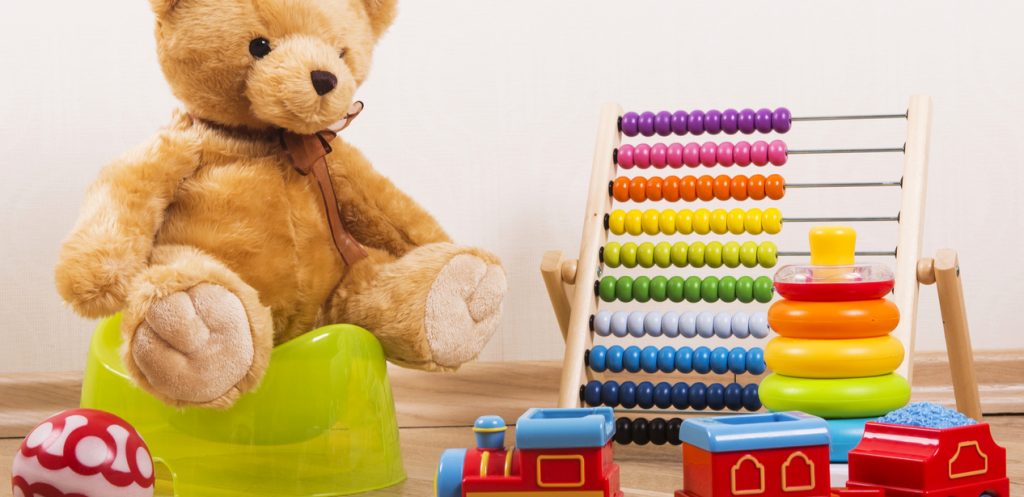
Potty training diary
This Mumsnetter’s diary is a pretty typical example of what you can expect when you start potty training your toddler:
Day 1. We stayed in all day. Potty in the lounge. Sat him on the potty every 15 mins for five mins or so. If he did a wee while he was on the potty we would cheer and give him stickers etc. If he did a wee on the floor then we just said: “Never mind, we’ll get it in the potty next time and get a sticker.” No pants or trousers, just naked bottom half all day.
Day 2. More of the same, with more wees on the potty than on the floor.
Day 3. Still stayed in all day but only sat him on the potty every two hours or so (I worked out from the previous couple of days that he wees about every two hours). He mostly managed to hold it in for the whole two hours each time and then did it straight away when I asked him to sit on the potty.
Day 4. The same again, no accidents.
Day 5. Stopped reminding him every two hours. Said at the beginning of the day: “If you need a wee then ask mummy. Your potty is here. OK?” A few accidents.
Day 6. Same again but he got the hang of it without me reminding him and started asking to go.
Reacting to accidents
Be prepared for lots of puddles and never punish her for accidents. Just say: “Oops, next time let’s try and make it to the potty.” Clean up and move on.
Be sympathetic about accidents and stress the joys of no nappies rather than the delights of weeing in the potty. Don’t make a drama out of wet pants – children, especially when they’re older, are often ashamed enough already. Can you remember your bladder letting you down as a child and how it felt?
During the early days, a tummy bug or diarrhea is likely to cause accidents. If your child has diarrhea then it is kinder to keep her at home, if possible. She’ll probably be disgusted and upset. Reassure her this also happens to adults, although that might make her even more disgusted and upset.
Don’t imply toileting is disgusting
Most people aren’t relaxed about their bodily functions, so it can be difficult not to pass your hang-ups on to your child. Phrases like “ugh, you smell” will be counterproductive. Control your revulsion, even when scraping poo from the living room carpet.
Potty training out and about
Toddlers can’t go ‘just in case’ before a long journey. Inevitably, they’ll want to go when you’re travelling at 70mph along the motorway. Take a potty with you but don’t risk life and limb to avoid a puddle in the car. One more reason to delay buying that Porsche.
” It’s so hit and miss with my son. Just as I think we’ve made progress he has a set back. We carry a potty in the car and, if tells me he needs a wee, I pull over, he uses it and gets praised.“
Trainer pants may be worthwhile for trips out and always take more than one change of clothing. Children should have their clothes changed promptly – it’s horrid to sit in soaked or soiled pants and illogical to think this will reinforce their need to go to the toilet.
Getting your toddler dry through the night
Don’t rush trying to get your toddler to stay dry through the night. Only dispense with night-time nappies once daytime dryness has been comfortably achieved and she has had some (or all) nights in which the nappy stayed dry.
If your child isn’t dry at night it’s probably because their nervous system isn’t mature enough to trigger a signal that their bladder is full and needs emptying.
Discuss with your child the issue of leaving nappies off at night and put a plastic sheet under the sheets. Be relaxed – reassure your child it doesn’t matter if they wet the bed and that you can wash the sheets and change their pyjamas. Let them know they’re bound to get the hang of it soon.
If your child continues to be wet at night after the age of six, visit your GP.
One in 10 six-year-olds is regularly wet at night. Most grow out of it. Being wet at night runs in families and boys may be slower than girls to ditch the night-time nappy.


